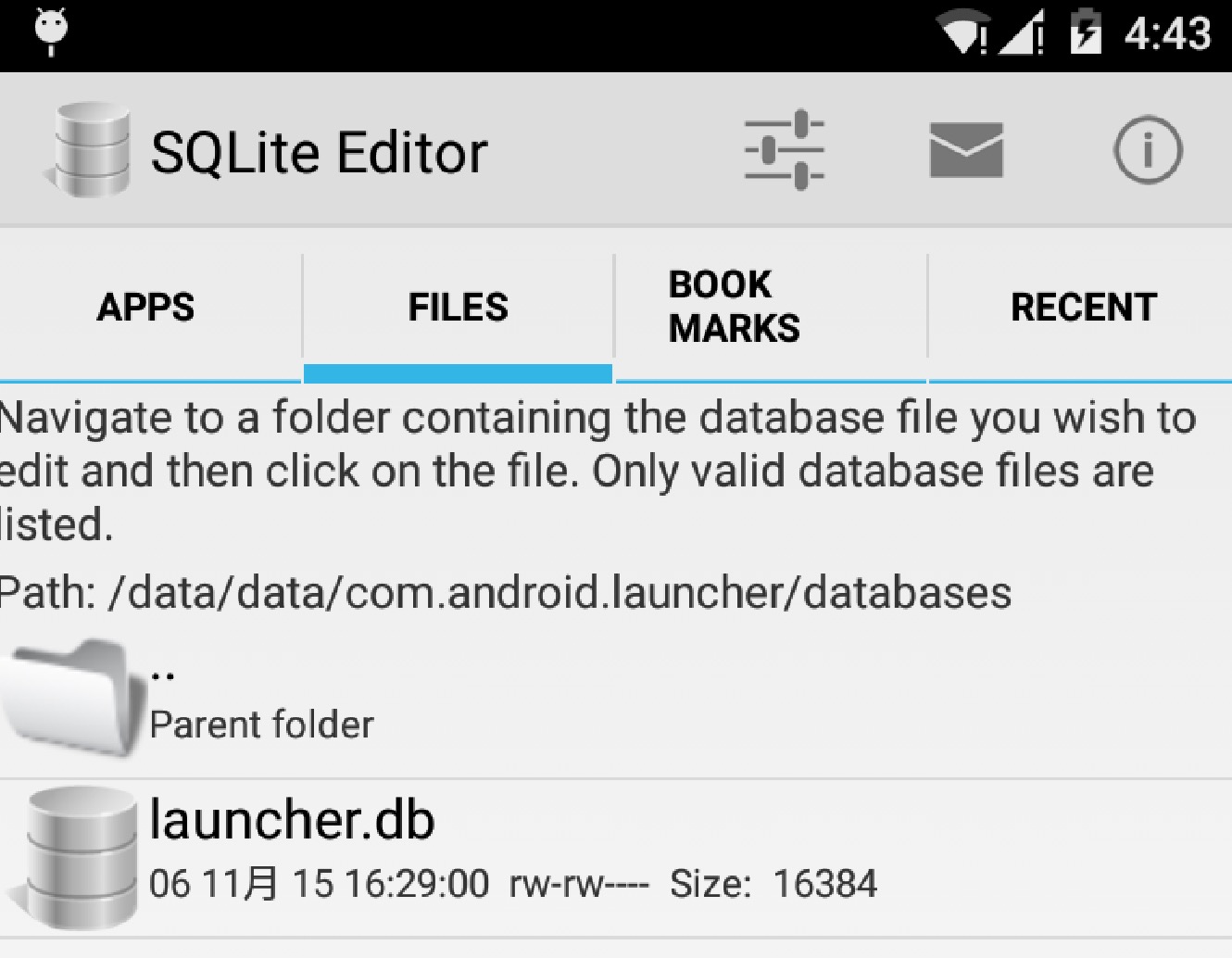編輯:關於android開發
Android快捷方式作為Android設備的殺手锏技能,一直都是非常重要的一個功能,也正是如此,各種流氓App也不斷通過快捷方式霸占著這樣一個用戶入口。
同時,各大國產ROM和Luncher的崛起,讓這個桌面之爭變的更加激烈。畢竟大家都只想用戶用自己的App資源,所以,現在各大App不僅僅是要搶占入口,同時還要和各大ROM斗智斗勇。本文將對這個快捷方式進行深度解密,同時給出App適配各種ROM的整合方案。
本文很多地方參考了這位朋友的實現:
https://gist.github.com/waylife/437a3d98a84f245b9582
特此表示感謝!
所謂少林,是指系統正統的解決方法
天下武功出少林,天下的快捷方式都是Google給的,我們先來看看如何使用Android系統提供的方式來使用Android的快捷方式。
首先大家要知道各種Launcher的區別,原生的Launcher,是兩層結構,桌面是快捷方式,而進去後的App列表是App的Launch Icon;而以小米為首的一幫ROM,參考iOS風格,將Launcher改為了一層,即直接顯示Launch Icon。
創建快捷方式的Action:
// Action 添加Shortcut
public static final String ACTION_ADD_SHORTCUT = com.android.launcher.action.INSTALL_SHORTCUT;
通過廣播創建快捷方式:
/**
* 添加快捷方式
*
* @param context context
* @param actionIntent 要啟動的Intent
* @param name name
*/
public static void addShortcut(Context context, Intent actionIntent, String name,
boolean allowRepeat, Bitmap iconBitmap) {
Intent addShortcutIntent = new Intent(ACTION_ADD_SHORTCUT);
// 是否允許重復創建
addShortcutIntent.putExtra(duplicate, allowRepeat);
// 快捷方式的標題
addShortcutIntent.putExtra(Intent.EXTRA_SHORTCUT_NAME, name);
// 快捷方式的圖標
addShortcutIntent.putExtra(Intent.EXTRA_SHORTCUT_ICON, iconBitmap);
// 快捷方式的動作
addShortcutIntent.putExtra(Intent.EXTRA_SHORTCUT_INTENT, actionIntent);
context.sendBroadcast(addShortcutIntent);
}
參數相信大家都能看得懂,只是有一點需要注意的,duplicate這個屬性,是設置該快捷方式是否允許多次創建的屬性,但是,在很多ROM上都不能成功識別,嗯,這就是我們最開始說的快捷方式亂現象。
刪除快捷方式的Action:
// Action 移除Shortcut
public static final String ACTION_REMOVE_SHORTCUT = com.android.launcher.action.UNINSTALL_SHORTCUT;
通過廣播刪除快捷方式:
/**
* 移除快捷方式
*
* @param context context
* @param actionIntent 要啟動的Intent
* @param name name
*/
public static void removeShortcut(Context context, Intent actionIntent, String name) {
Intent intent = new Intent(ACTION_REMOVE_SHORTCUT);
intent.putExtra(Intent.EXTRA_SHORTCUT_NAME, name);
// intent.addCategory(Intent.CATEGORY_LAUNCHER);
intent.putExtra(duplicate, false);
intent.putExtra(Intent.EXTRA_SHORTCUT_INTENT, actionIntent);
context.sendBroadcast(intent);
}
參數與創建快捷方式的方法擊敗類似,需要注意的是,Intent.EXTRA_SHORTCUT_INTENT,與之前創建快捷方式的Intent必須要是同一個,不然是無法刪除快捷方式的。
所謂逍遙派,是指我們從原理來理解如何來適配各種Launcher。
原生的快捷方式添加方法,雖然是官方提供的,但在天國這樣一個怎麼說呢的國家裡,基本是很難使用、適配的,也就是我們最開始說的那些原因。下面我們先從快捷方式的整個生命周期來了解下產生、添加、刪除快捷方式的原理,再來思考如何實現多ROM、Launcher的適配。
快捷方式其實都存儲在Launcher的數據庫中,我們在手機上打開SQLite Editor打開Launcher的數據庫。

我們打開Launcher.db的favZ喎?http://www.Bkjia.com/kf/ware/vc/" target="_blank" class="keylink">vcml0ZbHto6zV4sDvvs3Kx87Sw8exo7TmtcS/7L3dt73Kvcr9vt2jujwvcD4NCjxwPjxpbWcgYWx0PQ=="2.png" src="http://www.bkjia.com/uploads/allimg/151123/04355I255-1.png?imageMogr2/auto-orient/strip%7CimageView2/2/w/1240" title="\" />
幾個主要的字段大家基本一看就懂:title、intent、iconResource、icon,分別對應快捷方式名稱,快捷方式intent,快捷方式圖標來源,快捷方式圖標二進制數據。
了解了快捷方式的存儲原理,我們就可以針對這個數據庫來做文章,所有的快捷方式都可以通過修改這個數據庫來實現,同時還不用太考慮兼容性問題。
對於快捷方式的創建,我們依然可以使用系統提供的方法,所以這裡不再多說。
前面我們說了,通過duplicate屬性可以區分是否允許創建重復的快捷方式,但是,很多ROM是無法兼容到的,所以,這裡我們使用查詢Launcher數據庫的方式來實現。
我們先來看代碼:
/**
* 檢查快捷方式是否存在
* 注意: 有些手機無法判斷是否已經創建過快捷方式
* 因此,在創建快捷方式時,請添加
* shortcutIntent.putExtra(duplicate, false);// 不允許重復創建
* 最好使用{@link #isShortCutExist(Context, String, Intent)}
* 進行判斷,因為可能有些應用生成的快捷方式名稱是一樣的的
*/
public static boolean isShortCutExist(Context context, String title) {
boolean result = false;
try {
ContentResolver cr = context.getContentResolver();
Uri uri = getUriFromLauncher(context);
Cursor c = cr.query(uri, new String[]{title}, title=? , new String[]{title}, null);
if (c != null && c.getCount() > 0) {
result = true;
}
if (c != null && !c.isClosed()) {
c.close();
}
} catch (Exception e) {
result = false;
e.printStackTrace();
}
return result;
}
/**
* 不一定所有的手機都有效,因為國內大部分手機的桌面不是系統原生的
* 更多請參考{@link #isShortCutExist(Context, String)}
* 桌面有兩種,系統桌面(ROM自帶)與第三方桌面,一般只考慮系統自帶
* 第三方桌面如果沒有實現系統響應的方法是無法判斷的,比如GO桌面
*/
public static boolean isShortCutExist(Context context, String title, Intent intent) {
boolean result = false;
try {
ContentResolver cr = context.getContentResolver();
Uri uri = getUriFromLauncher(context);
Cursor c = cr.query(uri, new String[]{title, intent}, title=? and intent=?,
new String[]{title, intent.toUri(0)}, null);
if (c != null && c.getCount() > 0) {
result = true;
}
if (c != null && !c.isClosed()) {
c.close();
}
} catch (Exception ex) {
result = false;
ex.printStackTrace();
}
return result;
}
private static Uri getUriFromLauncher(Context context) {
StringBuilder uriStr = new StringBuilder();
String authority = LauncherUtil.getAuthorityFromPermissionDefault(context);
if (authority == null || authority.trim().equals()) {
authority = LauncherUtil.getAuthorityFromPermission(context, LauncherUtil.getCurrentLauncherPackageName(context) + .permission.READ_SETTINGS);
}
uriStr.append(content://);
if (TextUtils.isEmpty(authority)) {
int sdkInt = android.os.Build.VERSION.SDK_INT;
if (sdkInt < 8) { // Android 2.1.x(API 7)以及以下的
uriStr.append(com.android.launcher.settings);
} else if (sdkInt < 19) {// Android 4.4以下
uriStr.append(com.android.launcher2.settings);
} else {// 4.4以及以上
uriStr.append(com.android.launcher3.settings);
}
} else {
uriStr.append(authority);
}
uriStr.append(/favorites?notify=true);
return Uri.parse(uriStr.toString());
}
這裡有兩個重載的isShortCutExist方法,唯一的區別就是最後一個參數——intent,加這個參數的原因,在注釋中已經寫了,更加精確。而getUriFromLauncher方法,是給調用的ContentResolver提供Uri。構造的時候,可以看見,Android的版本話碎片問題,是多麼的嚴重……
這樣在添加快捷方式前,通過這個判斷下,就可以只添加一個快捷方式了。
知道了我們是如何判斷快捷方式是是否存在的,我們就可以通過這種思路來為任意PackageName的App添加快捷方式,代碼如下:
/**
* 為PackageName的App添加快捷方式
*
* @param context context
* @param pkg 待添加快捷方式的應用包名
* @return 返回true為正常執行完畢
*/
public static boolean addShortcutByPackageName(Context context, String pkg) {
// 快捷方式名
String title = unknown;
// MainActivity完整名
String mainAct = null;
// 應用圖標標識
int iconIdentifier = 0;
// 根據包名尋找MainActivity
PackageManager pkgMag = context.getPackageManager();
Intent queryIntent = new Intent(Intent.ACTION_MAIN, null);
queryIntent.addCategory(Intent.CATEGORY_LAUNCHER);// 重要,添加後可以進入直接已經打開的頁面
queryIntent.setFlags(Intent.FLAG_ACTIVITY_RESET_TASK_IF_NEEDED);
queryIntent.addFlags(Intent.FLAG_ACTIVITY_LAUNCHED_FROM_HISTORY);
List list = pkgMag.queryIntentActivities(queryIntent,
PackageManager.GET_ACTIVITIES);
for (int i = 0; i < list.size(); i++) {
ResolveInfo info = list.get(i);
if (info.activityInfo.packageName.equals(pkg)) {
title = info.loadLabel(pkgMag).toString();
mainAct = info.activityInfo.name;
iconIdentifier = info.activityInfo.applicationInfo.icon;
break;
}
}
if (mainAct == null) {
// 沒有啟動類
return false;
}
Intent shortcut = new Intent(
com.android.launcher.action.INSTALL_SHORTCUT);
// 快捷方式的名稱
shortcut.putExtra(Intent.EXTRA_SHORTCUT_NAME, title);
// 不允許重復創建
shortcut.putExtra(duplicate, false);
ComponentName comp = new ComponentName(pkg, mainAct);
shortcut.putExtra(Intent.EXTRA_SHORTCUT_INTENT,
queryIntent.setComponent(comp));
// 快捷方式的圖標
Context pkgContext = null;
if (context.getPackageName().equals(pkg)) {
pkgContext = context;
} else {
// 創建第三方應用的上下文環境,為的是能夠根據該應用的圖標標識符尋找到圖標文件。
try {
pkgContext = context.createPackageContext(pkg,
Context.CONTEXT_IGNORE_SECURITY
| Context.CONTEXT_INCLUDE_CODE);
} catch (PackageManager.NameNotFoundException e) {
e.printStackTrace();
}
}
if (pkgContext != null) {
Intent.ShortcutIconResource iconRes = Intent.ShortcutIconResource
.fromContext(pkgContext, iconIdentifier);
shortcut.putExtra(Intent.EXTRA_SHORTCUT_ICON_RESOURCE, iconRes);
}
// 發送廣播,讓接收者創建快捷方式
// 需權限
context.sendBroadcast(shortcut);
return true;
}
所謂星宿派,是指我們使用一些Trick來解決多Launcher適配的問題。
由於快捷方式的碎片化非常嚴重,所以,你顧得上這種ROM,顧不上其它ROM。例如,在原生ROM上,你需要使用類似原生的Launcher權限:
但是,在其它ROM上呢,例如華為,你需要這樣的權限:
為了程序能夠通用性夠強,理論上我們得為所有不使用原生Launcher權限的Launcher配置權限代碼,是的,你妹聽錯,是所有,只有通過這種奇技淫巧,才能適配更多的Launcher,這裡貼一部分給大家爽一下:
這時候大家肯定要問了,你申請這麼多權限,用戶在安裝App的時候,不是要崩潰了,尼瑪,這麼多看都看不過來啊,其實,根本不需要擔心,因為這些基本都是各自ROM中的第三方ROM權限,在用戶安裝的時候,他們通常會被解析成原生Launcher的權限,例如:添加、修改桌面快捷方式。並不會將所有的權限都寫出來。
所謂西域派,是因為我想不出其他名字了。西域一派,使用其他方式來實現類似快捷方式的方法。
快捷方式的確是我們為應用導流的一個非常重要的入口,但是,由於碎片化實在太嚴重,所以,我們可以使用在Launcher App列表中為應用增加一個入口的方式來為App導流,簡單的說,就是增進一個App的入口Activity。
非常簡單,相信大家都知道這種方式來給App增加一個Activity入口。但是,這種方式,我們如何能夠自由的控制這個入口是否顯示呢?
PackageManager提供了一系列Package的管理方法,當然,也包含了我們非常關心的啟用、停用組件這一方法,這個方法在Root情況下,可以修改任一App的任意組件,在普通情況下,對自身App有絕對權限。使用方法也非常簡單:
public static void toggleFlowEntrance(Context context, Class launcherClass) {
PackageManager packageManager = context.getPackageManager();
ComponentName componentName = new ComponentName(context, launcherClass);
int res = packageManager.getComponentEnabledSetting(componentName);
if (res == PackageManager.COMPONENT_ENABLED_STATE_DEFAULT ||
res == PackageManager.COMPONENT_ENABLED_STATE_ENABLED) {
// 隱藏應用圖標
packageManager.setComponentEnabledSetting(
componentName,
PackageManager.COMPONENT_ENABLED_STATE_DISABLED,
PackageManager.DONT_KILL_APP);
} else {
// 顯示應用圖標
packageManager.setComponentEnabledSetting(
componentName,
PackageManager.COMPONENT_ENABLED_STATE_DEFAULT,
PackageManager.DONT_KILL_APP);
}
}
前面我們分析了各種快捷方式、Launcher入口的方式來對App進行導流,當然,這不是我們的目的,我們的目的是能夠掌握Android快捷方式的哭花寶典而不用那個啥。
所以,下面我封裝了一個shortcut的開源庫,從而可以盡可能的忽略ROM的差異,來使用快捷方式和Launcher入口。
項目地址:
https://github.com/xuyisheng/ShortcutHelper
目前該項目還在測試階段,還要很多問題和適配bug需要解決,歡迎大家提issue。
README如下:
本項目目前還在測試階段,請大家多提issue,共同完善。
快速使用shortcut,避免各種ROM適配導致的各種問題。
/**
* 添加快捷方式
*
* @param context context
* @param actionIntent 要啟動的Intent
* @param name name
* @param allowRepeat 是否允許重復
* @param iconBitmap 快捷方式圖標
*/
public static void addShortcut(Context context, Intent actionIntent, String name,
boolean allowRepeat, Bitmap iconBitmap)
判斷快捷方式是否存在
基礎方式
/**
* 判斷快捷方式是否存在
*
* 檢查快捷方式是否存在
* 注意: 有些手機無法判斷是否已經創建過快捷方式
* 因此,在創建快捷方式時,請添加
* shortcutIntent.putExtra(duplicate, false);// 不允許重復創建
* 最好使用{@link #isShortCutExist(Context, String, Intent)} * 進行判斷,因為可能有些應用生成的快捷方式名稱是一樣的的
* * @param context context * @param title 快捷方式名 * @return 是否存在 */ public static boolean isShortCutExist(Context context, String title)
嚴格方式(增加Intent的檢查)
/**
* 判斷快捷方式是否存在
*
* 不一定所有的手機都有效,因為國內大部分手機的桌面不是系統原生的
* 更多請參考{@link #isShortCutExist(Context, String)}
* 桌面有兩種,系統桌面(ROM自帶)與第三方桌面,一般只考慮系統自帶
* 第三方桌面如果沒有實現系統響應的方法是無法判斷的,比如GO桌面
* * @param context context * @param title 快捷方式名 * @param intent 快捷方式Intent * @return 是否存在 */ public static boolean isShortCutExist(Context context, String title, Intent intent)
/**
* 更新桌面快捷方式圖標,不一定所有圖標都有效(有可能需要系統權限)
*
* @param context context
* @param title 快捷方式名
* @param intent 快捷方式Intent
* @param bitmap 快捷方式Icon
*/
public static void updateShortcutIcon(Context context, String title, Intent intent, Bitmap bitmap)
需要注意的是,更新快捷方式在很多手機上都不能生效,需要系統權限。可以通過先刪除、再新增的方式來實現。
/**
* 為任意PackageName的App添加快捷方式
*
* @param context context
* @param pkg 待添加快捷方式的應用包名
* @return 返回true為正常執行完畢
*/
public static boolean addShortcutByPackageName(Context context, String pkg)
/**
* 移除快捷方式
*
* @param context context
* @param actionIntent 要啟動的Intent
* @param name name
*/
public static void removeShortcut(Context context, Intent actionIntent, String name)
/**
* 顯示隱藏Launcher入口
*
* @param context context
* @param launcherClass launcherClass
*/
public static void toggleFlowEntrance(Context context, Class launcherClass)
使用Launcher入口需要在AndroidMainifest文件中注冊新增的入口Activity,例如:
public void addShortcutTest(View view) {
// 系統方式創建
// ShortcutUtils.addShortcut(this, getShortCutIntent(), mShortcutName);
// 創建前判斷是否存在
if (!ShortcutSuperUtils.isShortCutExist(this, mShortcutName, getShortCutIntent())) {
ShortcutUtils.addShortcut(this, getShortCutIntent(), mShortcutName, false,
BitmapFactory.decodeResource(getResources(), com.hujiang.hj_shortcut_lib.R.drawable.ocsplayer));
finish();
} else {
Toast.makeText(this, Shortcut is exist!, Toast.LENGTH_SHORT).show();
}
// 為某個包創建快捷方式
// ShortcutSuperUtils.addShortcutByPackageName(this, this.getPackageName());
}
public void removeShortcutTest(View view) {
ShortcutUtils.removeShortcut(this, getShortCutIntent(), mShortcutName);
}
public void updateShortcutTest(View view) {
ShortcutSuperUtils.updateShortcutIcon(this, mShortcutName, getShortCutIntent(),
BitmapFactory.decodeResource(getResources(), com.hujiang.hj_shortcut_lib.R.mipmap.ic_launcher));
}
public void toggleFlowEntrance(View view) {
FlowEntranceUtil.toggleFlowEntrance(this, HJShortcutActivity.class);
}
private Intent getShortCutIntent() {
// 使用MAIN,可以避免部分手機(比如華為、HTC部分機型)刪除應用時無法刪除快捷方式的問題
Intent intent = new Intent(Intent.ACTION_MAIN);
intent.addCategory(Intent.CATEGORY_DEFAULT);
intent.setClass(MainActivity.this, HJShortcutActivity.class);
return intent;
}
 WebView的使用及添加進度條,webview添加進度條
WebView的使用及添加進度條,webview添加進度條
WebView的使用及添加進度條,webview添加進度條實現的效果比較簡單類似於微信打開網頁,頭部有個進度條顯示加載進度 1.在安卓端加載一個網頁 webView.l
 [轉]Android逆向之動態調試總結,android動態調試
[轉]Android逆向之動態調試總結,android動態調試
[轉]Android逆向之動態調試總結,android動態調試一、在SO中關鍵函數上下斷點 剛學逆向調試時。大多都滿足於在SO中某關鍵函數上下斷點。然後通過操作應用程序,
 淺談Android應用保護(一):Android應用逆向的基本方法,淺談android
淺談Android應用保護(一):Android應用逆向的基本方法,淺談android
淺談Android應用保護(一):Android應用逆向的基本方法,淺談android對於未進行保護的Android應用,有很多方法和思路對其進行逆向分析和攻擊。使用一些
 初次使用Android Studio時的配置
初次使用Android Studio時的配置
初次使用Android Studio時的配置 一、第一次安裝: Android Studio安裝完成後,第一次啟動AS前,為了避免重新下載新版本的SDK,操作如下: